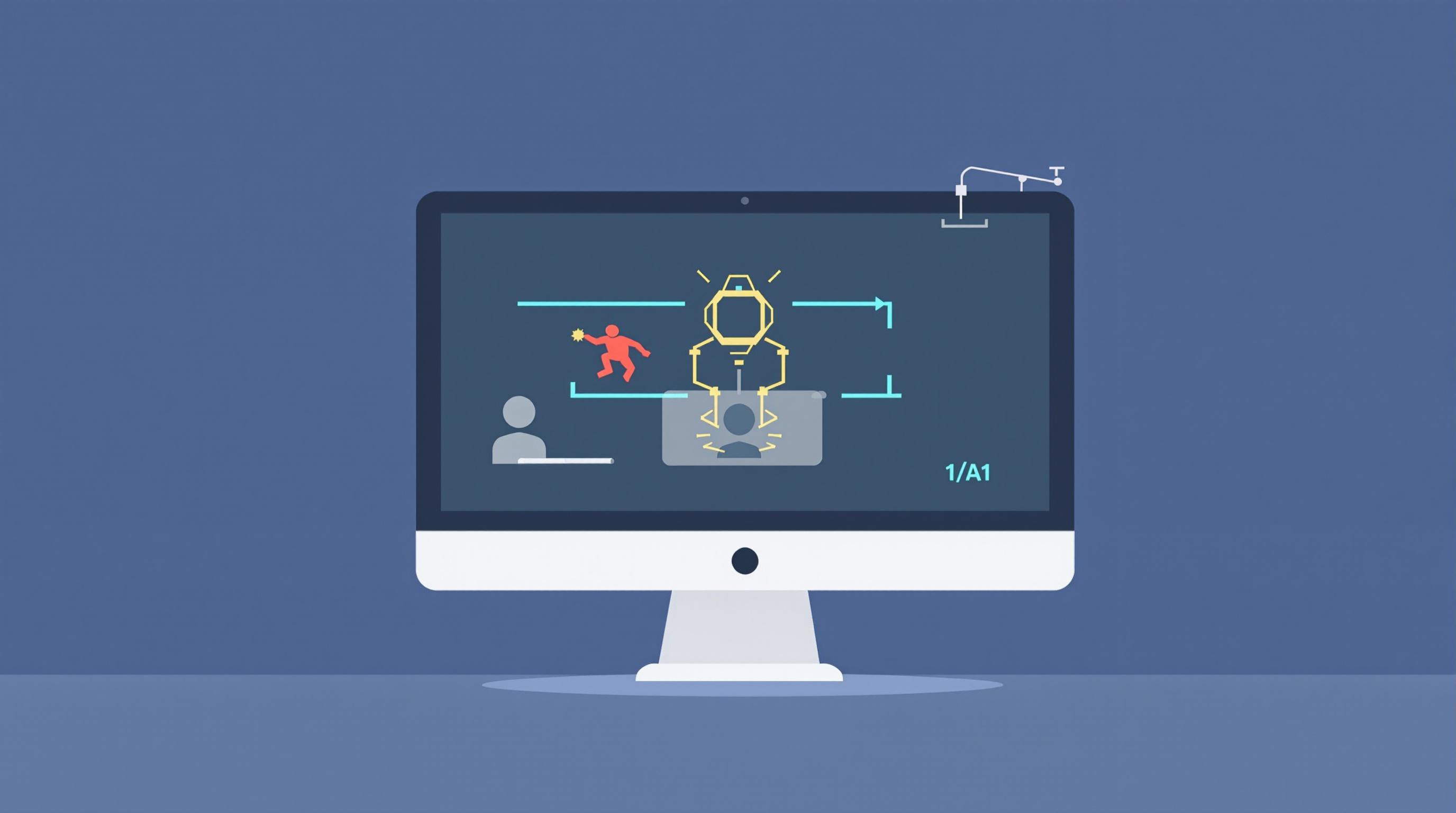Related Articles
- The Role of Cultural Norms and Social Pressure in Shaping Corporate Tax Behaviors Across Borders
- Top 6 Game-Changing HR Analytics Platforms Since 2019 Revolutionizing Employee Rights Enforcement
- The Unexpected Impact of Cultural Appropriation on Copyright Claims and Creative Ownership Debates
- Unveiling the Role of AI in Detecting Counterfeit Trademarks Before Official Approval
- The Quiet Impact of Cultural Nuances on Negotiation Dynamics in Global Business Agreements
- The Hidden Role of Psychometric Profiling in Choosing Co-Founders for Startup Success
Unveiling the Role of AI in Detecting Counterfeit Trademarks Before Official Approval
Unveiling the Role of AI in Detecting Counterfeit Trademarks Before Official Approval
In today’s digital age, AI is transforming the trademark approval process by detecting counterfeit marks early, saving brands and consumers from costly disputes. This article explores the multifaceted role of AI technologies—from machine learning algorithms to image recognition—in identifying counterfeit trademarks before official registration, enhanced by real-world examples, case studies, and statistics.
Why Are Counterfeit Trademarks a Growing Threat?
Imagine the frustration of a startup investing time and money in a unique brand identity, only to find a copycat already registered a confusingly similar trademark. Counterfeit trademarks don't just cause financial losses—they erode consumer trust and brand reputation. According to the International Trademark Association (INTA), trademark infringement cases surged by 15% globally in 2023 alone. With the sheer volume of trademark applications soaring, it’s nearly impossible for human examiners to catch every potential counterfeit without assistance.
AI’s Early Intervention: An Overview
Artificial Intelligence steps into the trademark approval arena as a vigilant gatekeeper. Using advanced pattern recognition and natural language processing (NLP), AI systems scan millions of existing trademarks, logos, and related imagery in seconds—tasks that would take human examiners weeks. This rapid screening helps identify red flags such as near-duplicates or intentionally deceptive marks, effectively reducing approval delays and legal disputes.
Case Study: WIPO’s AI-Powered Trademark Screening
The World Intellectual Property Organization (WIPO) recently deployed AI tools to analyze trademark applications across multiple jurisdictions. The results? A 40% reduction in trademark conflicts during the preliminary stages, leading to faster approvals and fewer legal battles. This international example highlights AI’s potential to streamline global trademark systems while protecting intellectual property rights.
The Structural Mechanics Behind AI Detection
It’s a perfect blend of technology and legal safeguards. At the core, convolutional neural networks (CNNs) process logo images to detect visual similarities, while NLP models analyze text-based trademarks for phonetic and semantic resemblances. These AI models continuously learn from new data, improving their accuracy over time. For instance, if a new brand name strongly resembles an existing protected mark in both spelling and pronunciation, AI flags it for further human review.
A Conversational Glimpse: How AI Helped a Local Fashion Brand
“I honestly didn’t even know there was an AI tool aiding the process until mine got flagged,” shares Mia, an 28-year-old entrepreneur from New York City. Her boutique fashion label’s application was initially questioned because the AI system detected similarities with an older European brand. After a quick manual review, it was cleared, saving her years of potential legal hassle. Mia’s experience shows how AI acts like a preventive superhero, catching issues before they snowball.
Statistics: Impact on Legal Costs and Time
According to a 2023 report by the American Intellectual Property Law Association, early AI detection of counterfeit trademarks can reduce related legal costs by up to 60%, and the overall approval time by nearly 35%. These efficiencies benefit not only businesses but also patent offices struggling with application backlogs.
Persuasive Angle: Why AI Adoption Isn’t Optional Anymore
Try to imagine a trademark office without AI in today’s data overload scenario. The risk? Letting counterfeit trademarks slip through the cracks, causing strikes against genuine innovators. AI’s incorporation is no longer just a convenience; it’s imperative. Organizations like USPTO and EUIPO are investing heavily in AI platforms, showing a clear trend that AI integration sets the gold standard for trademark protection worldwide.
Humorous Interlude: The Case of the “Not-So-Clever” Copycat
Picture this: a small coffee shop tries to steal thunder by registering a logo suspiciously similar to a massive coffee chain’s emblem—a latte art design with an awkwardly crooked leaf. AI instantly flags it. The best part? The copycat’s owner claimed, “I thought it was different enough. I mean, who notices a crooked leaf?” Let’s just say, AI noticed. This anecdote highlights how AI sorts the seriously deceptive from the laughably obvious, streamlining enforcement.
Future Trends: AI and Blockchain Synergies
Looking ahead, the fusion of AI with blockchain technology promises unparalleled transparency and traceability in trademark approvals. Imagine a decentralized ledger where every trademark application and its AI analysis are permanently recorded and immutable, drastically reducing fraud. Industries are already piloting such models, hinting at a future where counterfeit detection is not just reactive but proactive and collaborative.
Challenges and Ethical Considerations
Despite its promise, AI-based counterfeit detection isn't foolproof. False positives can unfairly delay legitimate trademarks, burdening small businesses disproportionately. Ethical governance is crucial to ensure AI systems are transparent, unbiased, and include human oversight. Patent offices worldwide are working on frameworks to balance automation with fairness.
Technical Deep Dive: How AI Deciphers Subtle Differences
AI’s power lies in its ability to decode nuances that human eyes might overlook. For example, image recognition algorithms measure geometric ratios, color codes, and whitespace patterns—elements that create a trademark’s “visual DNA.” Likewise, in text marks, AI leverages phonetic algorithms and semantic analysis to compare how trademarks sound and what they mean in different languages, uncovering potential conflicts across borders.
Global Implications: Harmonizing International Trademark Law
AI's standardized evaluation models pave the way for harmonizing trademark laws across countries. This uniformity benefits multinational corporations by providing clearer protection everywhere they operate. However, adapting AI to respect diverse legal norms remains a complex task, requiring collaboration between technologists, legal experts, and policymakers.
Calls to Action for Businesses and Lawmakers
Brands must embrace digital tools to sharpen their trademark monitoring strategies early on. Lawmakers, meanwhile, should support AI research while crafting legislation that safeguards against misuse. Public-private partnerships could accelerate AI innovations that protect intellectual property without compromising civil liberties.
Final Thoughts from a 45-Year-Old Writer
Having worked in tech for over two decades, I’ve witnessed many AI evolutions—and the trademark arena is ripe for disruption. Protecting brands against counterfeit trademarks using AI is not just about technology; it’s about securing creativity, trust, and economic growth in our increasingly interconnected world. For anyone aged sixteen to seventy, understanding and supporting AI’s role in intellectual property protection represents a collective step towards a fairer marketplace for all.




